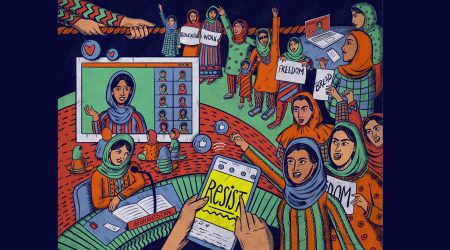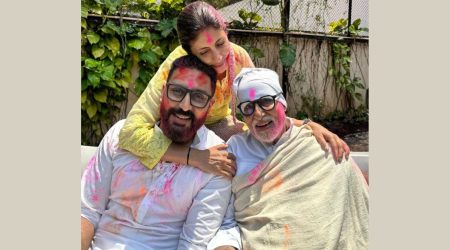By Bal Ram Singh, PhD
Assuming everything that happens in this universe only results from karma, one would ask what is the karma of the Brahamacharya?
As mentioned in the previous article, brahmacharya, a conduct or acharna, is a learned trait in this world. Where does one learn the Brahmacharya?
The primordial teacher of a child, not only after he/she is born, but even before one is born, is the mother. Ayurvedic texts provide elaborate elements and processes for the parents before the conception, during the conception, and after the conception for an illustrious child, so the training of brahmacharya begins, in principle, before even the child is conceived.
According an article by Dhiman et al. entitled, “Shad Garbhakara Bhavas vis-a-vis congenital and genetic disorders, there are Shadgarbhakarabhavas – Six Procreative Factors namely Matrija (maternal), Pitrija (paternal), Atmaja (Soul), Rasaja (Nutritional), Satmyaja (Wholesomeness), and Sattvaja (Psych/Mind), whose conglomerate is a must for healthy progeny, as per Charak Samhita, an elaborate Ayurveda text that was written 2,500 years ago.
Although even Matrija, Pitrija, and Aatmaja Bhavas can be changed with rituals designed to elevate the self realization of the parents to combine with the Poorvajanma Samskaras (karmas from the previous lives), the other three Bhavas-factors, namely, Satmyaja, Rasaja and Sattvaja Bhavas, can more conveniently modify the intrauterine environment and psychosomatic health of the mother, producing a healthy impact on the fetus. It is a well accepted fact now that environmental factors can influence the genome through epigenetics.
In addition, research in modern neuroscience, for example, one published in the journal Neuro-Image, used a method called dual electroencephalography (EEG) to look at brain signals in both mums and babies while they were interacting with each other. They found that mums and babies tend to synchronize their brain waves – an effect known as interpersonal neural connectivity – particularly in the frequency of 6-9 hertz, the infant alpha range.
“From our previous work, we know that when the neural connection between mothers and babies is strong, babies are more receptive and ready to learn from their mothers,” said Dr Vicky Leong in the University of Cambridge’s Department of Psychology, who led the study. “At this stage of life, the baby brain has the ability to change significantly, and these changes are driven by the baby’s experiences. By using a positive emotional tone during social interactions, parents can connect better with their infants, and stimulate development of their baby’s mental capacity.”
Thus, the link between a mother and child is profound, and new research suggests a physical connection even deeper than anyone thought. The profound psychological and physical bonds shared by the mother and her child begin during gestation when the mother is everything for the developing fetus, supplying warmth and sustenance, while her heartbeat provides a soothing constant rhythm.
In a recent study, scientists observed that micro-chimeric cells are not only found circulating in the blood, they are also embedded in the brain. They examined the brains of deceased women for the presence of cells containing the male “Y” chromosome. They found such cells in more than 60 percent of the brains and in multiple brain regions, and there were fewer fetal-derived cells in women with Alzheimer’s, implying a positive effect on mothers’ carrying the son’s brain cells (Scientific American, December 4, 2012).
Neuronal networks are continually honed and adjusted into young adulthood, especially those involved in rational thought and considering future consequences.
As the brain progresses into the 30s and 40s, adult synaptic plasticity, or the ability for connections to strengthen or weaken in response to activity changes, is thought to reprioritize rather than diminish, sign of the continuation of the brahmacharya lessons.
As elaborated in one of earlier articles in this series, the word mother comes from Sanskrit Matri (मातृ), is related to ma (मा), which is pronounced naturally as in amma, ammi, mom, mama, mommy, etc., in any and all languages of the world. In Sanskrit also, Ma means to stop or negate (thus a Yama), such as in Asato Ma Sadgamaya – Not the untruth but towards the truth.
It seems such processes, in fact, begin even in the fetuses, as demonstrated by an ultrasound study of a 23 pregnant women (Marx V, Nagy E. Fetal Behavioural Responses to Maternal Voice and Touch. PLoS One. 2015). Results showed that fetuses displayed more arm, head, and mouth movements when the mother touched her abdomen and decreased their arm and head movements to maternal voice. Thus, to make a Brahmachari, a mother is needed who is the only one capable of restricting the Parmatma the Brahm into the Jivatma of the body.
And, then the qualities of a Brahmachari become feasible, as described in Mahabharata:
क्षमाशीलो, जितेन्द्रियो, गुरुशुश्रूषातत्परः
ब्रह्मज्ञानेच्छुकश्च यो भवति स ब्रह्मचारी भवतीति
That he who is forgiving, self-controlled, devoted to the service of the Guru, and desirous of the knowledge of the Brahman becomes a brahmachari.

Balram Singh is a Professor and the President of the Institute of Advanced Sciences, Dartmouth, Massachusetts, researching Ayurveda, Yoga, Vedic education, and Vedic social and political traditions. He is also adjunct faculty at Jawaharlal Nehru University (JNU), New Delhi.












